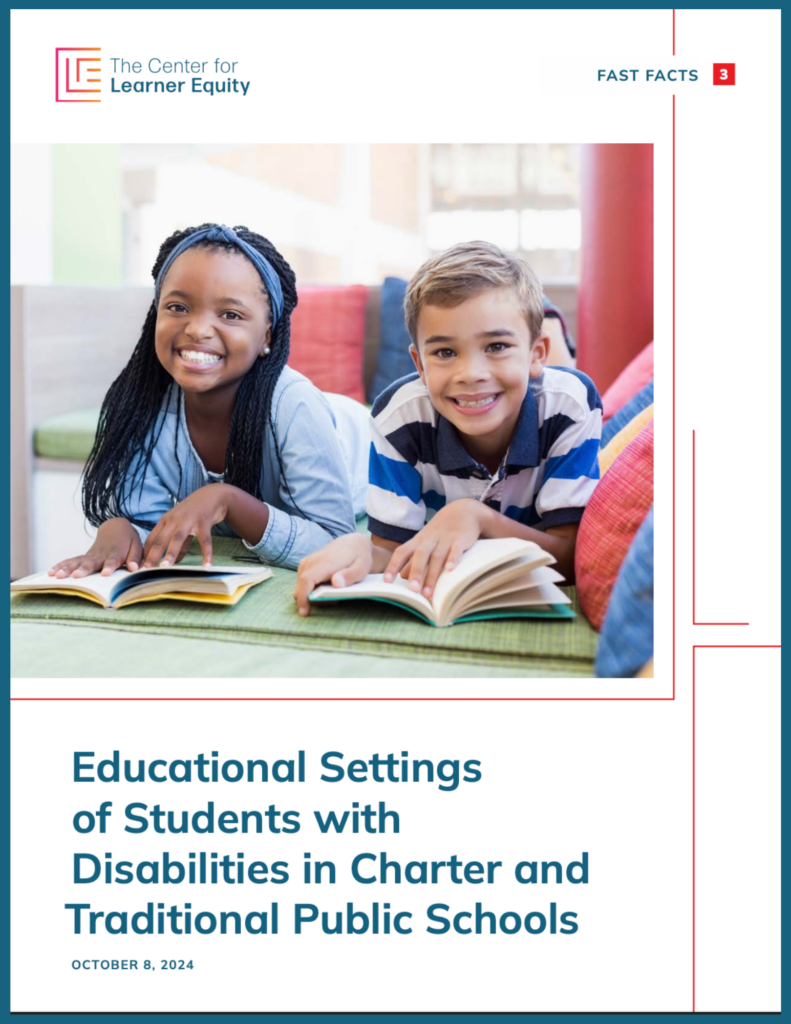CLE’s Analysis of the Civil Rights Data Collection
In September 2024, we completed the fifth analysis of the U.S. Department of Education’s Civil Rights Data Collection (CRDC) on access and opportunities for students with disabilities. Our key findings show progress in certain areas, substantial opportunity gaps for students with disabilities in others, and the impact of the COVID-19 pandemic on outcomes during the 2020-21 school year.
Our analysis examines data trends regarding the enrollment, placements, disciplinary removals, and post-secondary outcomes of students with disabilities in traditional and charter public schools. We also focus on charter schools specializing in educating students with disabilities to understand their growth around the United States and some of their key characteristics.
Key Findings
- Traditional public schools educate a greater proportion of students with disabilities than charters.
- Charters educate different types of students with disabilities than traditional public schools.
- In charters, students with disabilities are more likely to spend time in general education settings.
- Students with disabilities continue to experience higher rates of disciplinary practices and lower access to college preparation than their peers.
- Specialized charter schools, concentrated in a handful of states, are increasingly focusing on autism.
Recorded Webinar
Watch a recorded webinar discussing key findings and recommendations from the CRDC analysis. (Use passcode: HL4!m0at)
Acknowledgments
We would like to acknowledge Patrick Gibson, Morgan Considine, and Ashley Robles from the School & State Finance Project for their data cleaning, analysis, and synthesis of findings and Atelier LKS for design and layout. Li Ma, Chase Nordengren, and Lauren Morando Rhim from the Center for Learner Equity contributed to the brief, with review feedback from Wendy Tucker, Jennifer Coco, Amanda Fenton, Laura Kaloi, Erik Robelen, and data verification support from Lauren Davis.






Comments are closed.